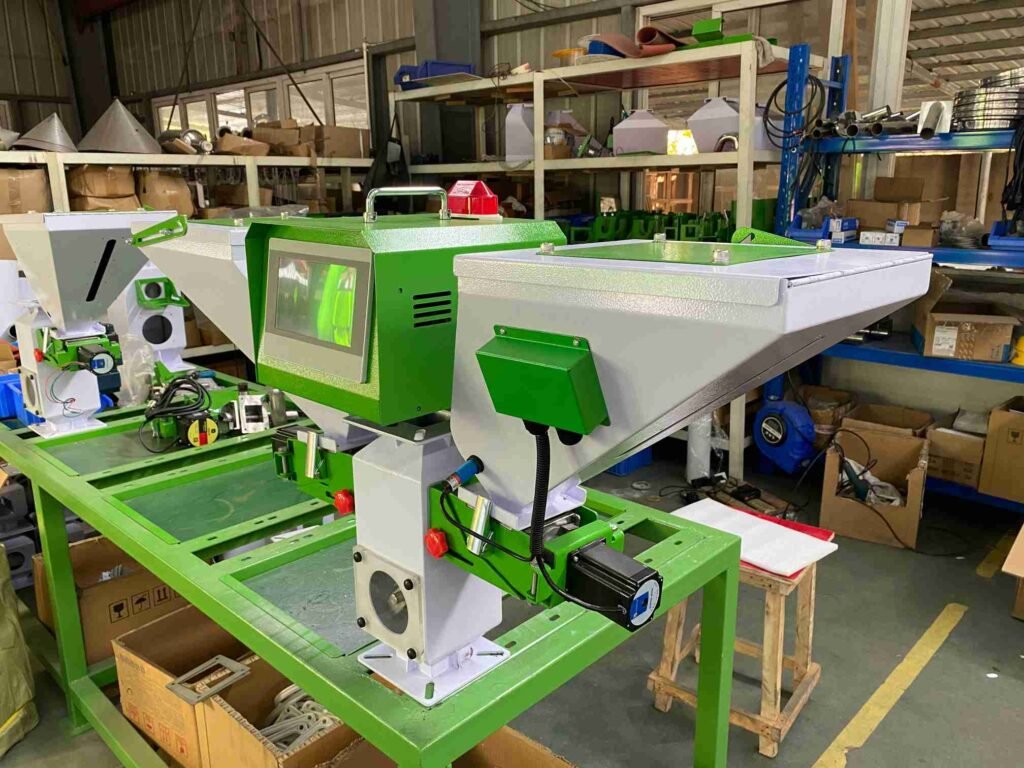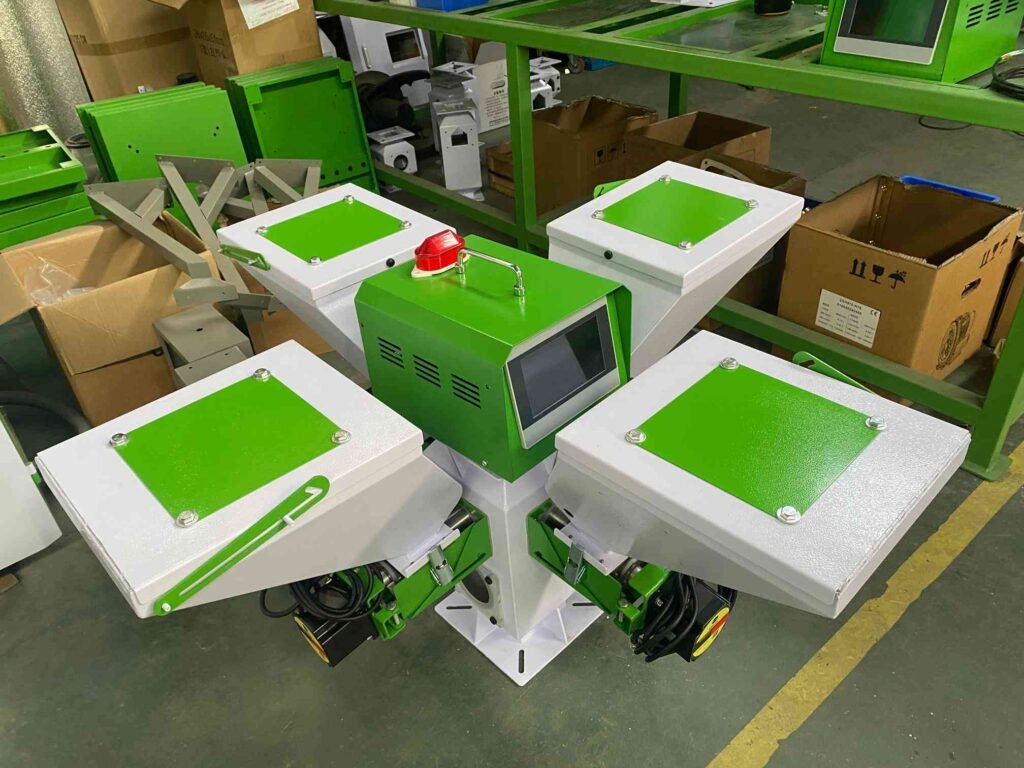Dans le contexte actuel de concurrence féroce dans l'industrie de la transformation des matières plastiques, l'efficacité de la production, la maîtrise des coûts et la qualité des produits sont devenues les éléments essentiels de la réussite d'une entreprise. En tant qu'équipement clé pour réaliser un dosage précis et une production automatisée, doseurs volumétriques deviennent de plus en plus importants dans les usines. Si votre usine présente les signes suivants, le moment est peut-être venu d'introduire des doseurs volumétriques.
Ⅰ. Faible efficacité de la production : le goulot d'étranglement du dosage manuel
Dans le mode de production par petits lots de variétés multiples, le dosage manuel limite sérieusement le développement des usines de plastique :
1. Les inconvénients du dosage manuel sont importants
Le dosage manuel traditionnel repose sur l'expérience, ce qui prend du temps, nécessite beaucoup de main-d'œuvre et est source d'erreurs. Lorsque la formule est mal mémorisée ou que le ratio dévie, cela entraîne un gaspillage de matières premières et des temps d'arrêt de l'équipement, ce qui interrompt le processus de production.
2. Les avantages des équipements intelligents sont évidents
Les doseurs volumétriques sont équipés d'un système de contrôle par micro-ordinateur entièrement numérique, qui peut stocker plus de 50 groupes de formules et réaliser la commutation par un seul bouton ; avec un entraînement d'extrusion à vis de haute précision, la valeur d'erreur n'excède pas ±1%. La conception modulaire permet un démontage et un nettoyage rapides, réduisant considérablement le temps d'arrêt de la production et améliorant de manière significative l'efficacité de la production.
Ⅱ. le contrôle des coûts est difficile : gaspillage de matières premières et perte d'équipement
De nombreuses usines ont de graves problèmes de coûts cachés dans le processus de mise en lots.
1. Les équipements traditionnels présentent des défauts évidents
Les équipements de dosage volumétrique traditionnels ne peuvent pas s'adapter aux fluctuations de la densité des matériaux et doivent souvent être surdosés pour garantir le ratio, ce qui entraîne un dosage imprécis des mélanges-maîtres et des additifs, ainsi qu'une forte augmentation du taux de déchets de matières premières. Dans le même temps, la manipulation imprécise des matériaux aggrave les pertes d'équipement et augmente encore les coûts.

2. Les équipements modernes ont d'excellentes performances
Les doseurs volumétriques modernes garantissent la précision du mélange 95%-98% grâce à la conversion précise de la vitesse de la vis et du volume, associée à une trémie en acier inoxydable 304 résistante à la corrosion et à une vis chromée. La conception économe en énergie du moteur sans balais à courant continu réduit la consommation d'énergie, et la manipulation précise des matériaux réduit l'usure de l'équipement et contrôle efficacement les coûts de maintenance.
Ⅲ. qualité instable : limites des méthodes de mélange traditionnelles
Les problèmes de qualité les plus courants des produits en plastique sont liés aux limites des méthodes de mélange traditionnelles.

1. Les causes des problèmes de qualité sont complexes
Une dispersion inégale des mélanges-maîtres entraîne une différence de couleur des produits, et un écart dans le rapport des additifs affecte la résistance du matériau. Ces facteurs entraînent des fluctuations de la qualité des produits et des réclamations de la part des clients.
2. Des équipements intelligents garantissent la qualité
La fonction de "compensation dynamique" des doseurs volumétriques permet d'ajuster la vitesse de la vis en temps réel afin d'assurer un rapport constant lorsque la densité du matériau change. L'aimant de trémie à trois tubes fourni en standard avec l'équipement absorbe les impuretés métalliques pour éviter l'usure de la vis, réduire les risques de production à la source et stabiliser la qualité du produit.
Ⅳ. Conclusion
Qu'il s'agisse d'une faible efficacité de production, d'un contrôle difficile des coûts ou d'une qualité instable, derrière ces problèmes, un doseur volumétrique est souvent la clé de la réussite. Il ne s'agit pas seulement d'un dispositif de dosage, mais aussi d'un centre de production automatisé - avec une précision de rapport de plus de 95%, 50 ensembles de formules pour une commutation rapide et une interconnexion intelligente avec l'ensemble du système de l'usine, il aide les usines de plastique à réduire les coûts et à augmenter l'efficacité, et à gagner la confiance du marché en termes de qualité.
Si votre usine est confrontée aux défis susmentionnés, le fait de se mettre en relation avec des fournisseurs de doseurs volumétriques peut constituer la première étape de la modernisation de votre chaîne de production et de l'amélioration de votre compétitivité.
